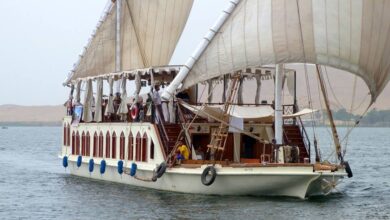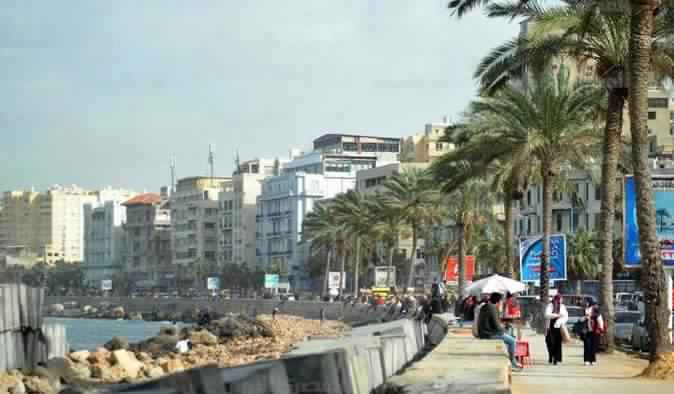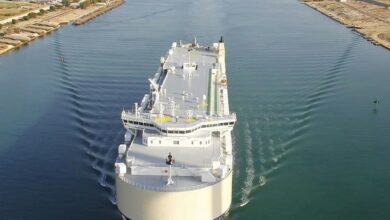Hurghada–The grinding of saws and pounding of mallets echoes through Hurghada’s shipyards, where dive boats are stripped down to their wood skeletons and rebuilt using traditions of boat building that date back thousands of years. Most of the 1500 dive boats that operate on the Red Sea are overhauled here–a local economy driven by the country’s tourism industry and the punishing forces of salt and sea on wooden vessels.
Dry dock space is at a premium in the municipal shipyard and its adjacent, privately-owned counterpart. A decade-old moratorium on new dive boat licenses has put pressure on boat owners to maintain and refurbish their vessels. On an average day, more than 80 boats are lined up in tight columns bow-to-stern, with just meters separating their gunwales.
“You have to work fast,” says businessman Eid Abu Rashed, who has commissioned work on two of his six dive boats. “The cost of the land is just one factor, but it becomes more expensive the longer you keep your boat ashore. For ten days to one month the rent is just a few thousand pounds, but if you must do more extensive repairs you might need two months, which costs about LE20,000.”
Abu Rashed, who fished the azure waters near Hurghada until tourism washed up on its shores three decades ago, directs the work on his boats using no other blueprint than his unerring eye. A typical 20-meter dive boat can be fully overhauled in about four weeks, he says, his gaze fixed on a knot in a plank three meters above.
“Fill it and seal it,” he tells one of his workers, who struggles to find it.
Boat owners must hire their own work crews. Most bring skilled craftsmen from the coastal Delta towns of Damietta, Baltim and Rashid, where generations of carpenters have amassed the skills and techniques of traditional wood shipbuilding.
Abu Rashed’s team of six Damietta craftsmen is applying the final coat of paint to the Ensch II. Its sister ship has been stripped down to its frame and carpenters work inside it as if picking clean the rib cage of a Jurassic beast.
Over the next few weeks the boat will be reassembled using fresh lumber. Egyptian camphor and acacia trees provide the wood for the bow, keel and trim. Scandinavian timber is preferred for the hull and deck planks.
“Finnish timber is the best, but it costs over LE2500 per square meter,” says Abu Rashed. “This is the biggest single cost of repair, so some boat owners use cheaper Russian or Swedish wood to cut expenses.”
Carpenters coax gently-curved rib planks from the gnarled trunks of mulberry trees, driving them through the teeth of a bench saw. Spokeshave planes give the wooden ribs form; clamps discipline stubborn wood until it settles into shape.
The hull boards are fastened to the ribs with special screws manufactured in local workshops. Caulkers hammer qetan, a fibrous twine, into the seams and seal it with stobah, a sticky tar. An ancient technique, it gives traditionally built wooden boats a distinct advantage over their modern fiberglass cousins.
“Wood hulls can expand or contract,” explains Ahmed Mohamed, a caulker from Matariya. “But fiberglass is rigid and can become brittle if repeatedly exposed to seawater and intense sun.”
It costs about LE5000 to paint a dive boat. Painters apply a thick coat of epoxy resin then sand the entire hull to give more traction to the final coats of primer and polyurethane. The glossy white finish can last years if properly maintained.
When work on the boat is completed, support blocks beneath the hull are removed. The vessel is lowered onto a wood sled and slowly winched backward into the sea. The vacant plot is quickly reoccupied by the next boat in line for repair, the work continuing year-round.
“The shipyard is always busy,” says Saeed Al-Araby, a 32-year-old carpenter from Matariya busy repairing a hull pockmarked with woodworm borings. “But most dive boat owners wait until the end of the tourist high season to bring their boats in for annual maintenance.”
Al-Araby, who moved to Hurghada nine years ago, claims to make LE100 per day as a carpenter–when employed. Despite a waiting list for dry dock space, competition among craftsmen is fierce. On average, he might get eight commissions, or about 120 days’ work, a year.
“There’s more work repairing fishing boats in Matariya, but it pays peanuts,” he grumbles. “Here, at least our clients are prepared to pay a decent wage. On the downside, we don’t get any medical insurance and we’re away from our families for most of the year.”
Like all craftsmen, al-Araby takes pride in his work. He relates the physical attributes and idiosyncracies of every boat he ever repaired as if recalling past lovers. He indulges in the texture of sanded acacia, the sheen of new paint, and the salubrious scent of camphor wood shavings.
There is nothing more satisfying, he says, than the sight of a newly rebuilt dive boat as it kisses the sea.




